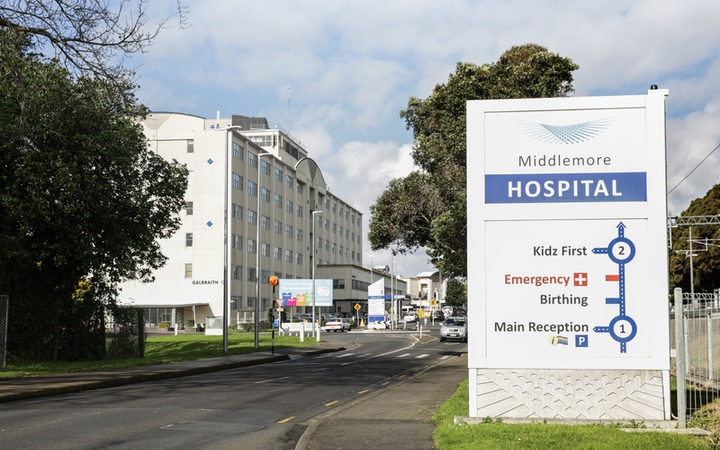Phil Pennington, Reporter
South Auckland's district health board has been unable to take legal action to get money back in the case of three out of four of its rotting buildings.

Counties-Manukau District Health Board did reach a confidential settlement with major builders Hawkins in early 2017 over the Scott building which houses acute care.
A two-by-one-metre cladding panel fell off the Scott building near the entrance to the dialysis day treatment centre in 2012, alerting the board to what was until then a hidden leaky building crisis.
It got the original builders, Hawkins, to urgently check and fix panels on the building, then began checks that revealed a litany of failures in three other buildings which at that stage were only 10 to 12 years old.
Many other Middlemore buildings are also badly compromised.
The board said "shortfalls in build methods" were partly to blame for leaks that have rotted the walls at, for example, up to 90 percent of places in the children's hospital.
However, by the time it lodged a High Court claim against Hawkins in 2012, it was too late for the other three buildings Hawkins had built from 1999 to 2001.
"This is because by the time the issues with the other three buildings, which are older than the Scott building, came to light, it was outside the 10 year limitation period in which claims could be made against the builder," acting DHB chief executive Gloria Johnson said.
A confidential settlement was reached. This negated the need to activate the High Court claim lodged five years before in early 2017 using the Building Disputes Tribunal, where, unlike the courts, rulings are not able to be publicly accessed even under the Official Information Act.
The board is bound by confidentiality not to reveal what it settled for.
RNZ understands it was for only $3 million, compared to an estimate repair bill for the Scott building alone of $27.5m, and climbing as the method of fixing it, while keeping patients inside, is still being worked on.
"Comment has been made that the settlement was low compared to cost of remediation. The settlement took into account that the new cladding would improve the building, extending its life and adding value," Dr Johnson said.
Hawkins, now owned by Downer in Australia, is understood to have not yet signed the contract to fix Scott.
At the nearby 1960s-era Galbraith building, asbestos is a risk and it rates as earthquake-prone.
The repair estimate there ranges wildly from more than $20m to almost $80m.
Meantime, the board wants to put even more patients into the building: it has budgeted $200,000 to turn the fifth floor from offices into a ward, to open by June to cope with the winter rush that last year overwhelmed it.
It is unclear how renovations can proceed without disturbing the asbestos.
RNZ has requested the asbestos test results from regular air monitoring but the board has so far not released them.
Airborne asbestos has been adjudged a risk in three areas, all of them not where patients are, though a small number of staff may be exposed in an area that covers IT support, phelbotomy and clinical records. There are plans to move them.



 Binoy Kampmark: The Australian Defence Formula, Spend! Spend! Spend!
Binoy Kampmark: The Australian Defence Formula, Spend! Spend! Spend! Ian Powell: New Hospital Building Trumps ‘Yes Minister’ Hospital Without Patients
Ian Powell: New Hospital Building Trumps ‘Yes Minister’ Hospital Without Patients Mike Treen: Prices Are Still Rising - It's A Cost Of Living Crisis
Mike Treen: Prices Are Still Rising - It's A Cost Of Living Crisis Gordon Campbell: On When Racism Comes Disguised As Anti-racism
Gordon Campbell: On When Racism Comes Disguised As Anti-racism Peter Dunne: Newshub And TVNZ Tip Of Media Iceberg
Peter Dunne: Newshub And TVNZ Tip Of Media Iceberg Harry Finch: Austerity – For And Against
Harry Finch: Austerity – For And Against